- Home
- Michael Pollan
The Omnivore's Dilemma Page 2
The Omnivore's Dilemma Read online
Page 2
It’s important to remember that while humans use plants and other animals, it’s not a one-way street. Plants and animals don’t just sit around waiting for human beings to use them—they use us, too. The ones that can adapt use our farms and cities to spread and multiply. Corn became king of the farm and the supermarket because it adapted itself easily to the needs of farmers and food makers. It had qualities that human beings prized. Those qualities allowed it to spread and grow until it worked its way into every corner of our lives—and every cell in our bodies.
THE RISE OF MAIZE
When Columbus returned to Spain after his first voyage he described many wonderful things he had seen to Queen Isabella. One of his discoveries was a towering grass with an ear as thick as a man’s arm, to which grains were “affixed in a wondrous manner and in form and size like garden peas, white when young.” That grass was called maize, but today we know it as corn.
Corn began as a wild grass called teosinte. (Teosinte means “mother of corn” in the Native American language Nahuatl.) Teosinte still grows wild in some places in Central America, but if you saw it, you might not recognize it as the mother of corn. Teosinte ears are no bigger than your thumb. They are not covered in thick husks. The kernels are tiny seeds. Yet long before Columbus arrived, that wild grass had managed to evolve into maize and spread across North America.
Corn spread because it could adapt to the needs of human beings. Of course, it needed human help. Humans selected bigger ears with fatter kernels and planted those seeds. By the year 700, Indians as far away as New England and Canada farmed maize. Corn had begun its march to world domination, but it still had a long way to go.
After Columbus, the Native Americans were conquered by the Europeans. But maize, or corn, had no loyalties to the Maya and other people who had helped it spread. It was only concerned with its own survival. The Europeans presented a way for corn to spread even farther. The plant quickly adapted to the new humans and their needs.
The first thing corn did was push aside the European crops the new settlers brought with them. The European plants just couldn’t compete. For example, wheat brought from Europe did not do as well as the native maize. A seed of wheat might, with luck, yield 50 new grains of wheat. A single planted corn seed could yield 150 to 300 fat kernels. Corn won that contest easily.
Corn continued quickly to win over the new settlers by being very useful. It could supply them with a ready-to-eat vegetable, a storable grain, a source of fiber, an animal feed, and heating fuel. Corn could be eaten fresh off the cob or dried on the stalk, stored over the winter and ground into flour. Corn could also be mashed and fermented to make beer or whiskey.
Sources: The Natural History Museum, London, and Smith, C. Wayne (Ed.) Corn: Origin, History, Technology and Production. John Wiley & Sons.
No part of the big grass went to waste. The husks could be woven into rugs and twine. The leaves and stalks made good feed for livestock. The shelled cobs could even be stacked by the outhouse and used as a rough substitute for toilet paper!
In the competition for king of the crops, corn left the European plants in the dust. Settlers who stuck to the Old World crops often perished. The colonists who recognized corn’s usefulness did well. And of course, one thing the successful farmers did was plant more corn, helping maize to build its kingdom. Corn helped the colonists and the colonists helped corn.
Corn made itself useful in one other important way. It turned out that corn was an excellent way to store and trade wealth. Dried corn is easy to transport and almost indestructible. The farmer can take any surplus to market and sell or trade it. In the new colonies corn often took the place of money.
Corn allowed farming settlements to become trading settlements. Corn made the slave trade possible. Traders in Africa paid for slaves with corn and then fed slaves corn when they were brought here. Corn was the perfect plant for the growing economy of the colonies. And just as important, the new colonists gave corn a way to get to the rest of the world.
M. POLLAN, FOOD DETECTIVE
Once I realized how much of our food is made from corn, I began to look at supermarkets differently. Instead of a giant variety of food, I saw corn hiding in every aisle. Now, I have nothing against corn. There’s nothing more delicious than a roasted ear of fresh sweet corn. But I didn’t understand why there had to be corn in everything we eat. Who decided that corn would be our main food? How did that happen? Where did all this corn come from and how did it take over our supermarket?
So I decided to find out. And like any good detective, I realized I had to start at the very beginning, which in this case meant a field of corn in Iowa. I began with that field and tried to trace the corn as it traveled across the country, first to my supermarket and then to my stomach. I watched it being turned into meat, milk, and eggs by cows and chickens. I watched as it was torn apart and rebuilt into all the different foods and products listed on all those labels.
What I discovered was a vast industry—a giant agriculture business or agribusiness. This industry doesn’t look much like farming the way most people imagine it. It’s more like a series of factories that turn raw materials into food products. It’s a giant food chain, the one that supplies most of the food Americans eat today.
A food chain in nature helps us understand who eats what (or whom). But the food chain that feeds most Americans is anything but natural. The industrial food chain that supplies our supermarkets stretches thousands of miles and has dozens of different links. It’s a chain that’s powered by oil and gasoline and controlled by giant corporations. It’s a chain that separates us from our food and keeps us from knowing what it really is we’re eating.
Most of all, it’s a food chain built around one plant. Somehow, that small wild grass that started in the hills of Central America has become the star of the biggest, most expensive food chain in the history of the world. But if corn is the star of this story, is it the hero or is it the bad guy? Before I could decide, I needed to get to know it better. And so I went to see it where it lives, in the vast cornfields of the Midwest.
2
The Farm
ONE FARMER, 140 EATERS
It was the first week of May and I was at the wheel of a clattering 1975 International Harvester tractor, driving through an Iowa cornfield. The tractor was dragging a spidery machine called an eight-row planter, which dropped corn seeds into the earth. Driving over that field was like trying to steer a boat through a sea of dark chocolate. The hard part was keeping the thing on a straight line. If you mess up, your rows will wobble, overlapping or spreading apart. Your neighbors will laugh and, worst of all, you will not be able to plant as much corn.
The tractor I was driving belonged to George Naylor, a big man with a moon face and a scraggly gray beard. He sat next to me as I drove and tried to shout instructions over the diesel roar. He had on the farmer’s usual baseball cap, a yellow shirt, and overalls—the stripy blue kind worn by railroad workers. The field was part of Naylor’s farm, 470 acres in Greene County, Iowa. Naylor had been working the farm for more than thirty years, since he took it over from his father in the mid 1970s.
This part of Iowa has some of the richest topsoil in the world, a layer nearly two feet thick. It was laid down over ten thousand years ago by retreating glaciers. Tall-grass prairie grew here until the mid-1800s, when the sod was first broken by the settler’s plow. George’s grandfather moved his family to Iowa from Derbyshire, England, in the 1880s. The sight of such soil, curling behind the blade of his plow, must have made him feel happy and confident. It’s gorgeous stuff, black gold as deep as you can dig, as far as you can see.
THE FAR END OF THE FOOD CHAIN
Back in 1919, when the Naylors bought this land, farming was very different and so was the Naylor farm. All sorts of crops grew here: corn, but also fruits and other vegetables, as well as oats, hay, and alfalfa to feed the pigs, cattle, chickens, and horses. (Horses were the tractors of that time.) Back then one out of ever
y four Americans lived on a farm. The average farmer grew enough food to feed twelve other Americans.
Less than a century later the picture is very different. Corn has muscled out most of the other plants and animals. The sheep, chickens, pigs, and horses are gone. So are most of the fruits and vegetables. George Naylor grows only two crops on his 470 acres—corn and soybeans. Corn has even pushed most of the people off the farm. Out of 300 million Americans, only 2 million are still farmers. That means the average American farmer today grows enough food to feed 140 other people.
The 140 people who depend on George Naylor for their food are all strangers. Like me, they live at the far end of a food chain that is long and complicated. George Naylor doesn’t know the people he is feeding and they don’t know him.
I came to the Naylor farm as an unelected representative of the 140 people he feeds. I was curious to learn whom, and what, I’d find at the far end of the food chain that keeps me alive. Of course, I had no way of knowing if it was George or some other farmer who grows the corn that feeds the steer that becomes my steak. That’s the nature of the industrial food chain. But I knew that a Midwest cornfield just like George Naylor’s is the place most of our food comes from.
George Naylor loads his truck with corn from his storage bin, which he’ll then tow to the grain elevator in town.
I PLANT CORN
The day I showed up at the farm was supposed to be the only dry one all week, and George was trying to get his last 160 acres of corn planted. A week or two later he’d start in on the soybeans. The soybean has become the second major crop in the industrial food chain, taking turns each year in the field with corn. It now finds its way into two-thirds of all processed foods.
For most of the afternoon I sat on a rough cushion George had made for me from crumpled seed bags. After a while he let me take the wheel. We drove back and forth across the field, a half a mile in each direction. Every pass across this field, which is almost perfectly flat, represents another acre of corn planted.
The corn seed we were planting looked like regular kernels of corn, but it was actually something called Pioneer Hi-Bred 34H31. You and I think of corn as corn, but farmers like Naylor know there are dozens of varieties, most created by large agribusiness companies. That’s one of the reasons corn has succeeded so well. It’s relatively easy for humans to breed new types of corn to fit our needs. But what’s good for corn (and agribusiness) isn’t always good for farmers. That’s the case with the new types of corn seed.
Back when George’s grandfather started farming, farmers grew their own seed. That’s the way farmers had always gotten their seed—they just kept some of their crop to be planted for the next season. Then in the 1930s seed companies came up with a new kind of corn seed—hybrid corn. A hybrid is a plant or animal whose parents have different traits. For example, you might take a type of corn that resists disease and cross it with another type of corn that produces a lot of ears. The result is a hybrid—a disease-resistant plant that produces a lot of corn. Sounds good, right?
The catch is that hybrid corn does not “come true.” The first crop planted from hybrid corn seed will all be identical. The plants will have all the good traits the seed company promised. But the “children” of that crop will be mixed. Some plants will be like their hybrid parents, but most will not. The only way to make sure your plants produce the same amount of corn—that they have the same yield as the original hybrid—is to buy new seed every year from a seed company.
Hybrid corn quadrupled the yields of farmers, from about twenty bushels per acre to about eighty bushels per acre. This was the beginning of a major change in the way farmers operated and the way we get our food. In a way it was the beginning of the industrial food chain.
The secret of modern corn hybrids is that they can be planted very close together. Before hybrids, a farmer could plant eight thousand corn plants in an acre. Today, George can grow thirty thousand plants in an acre. Hybrids have been bred for thicker stalks and stronger root systems, the better to stand upright in a crowd. This also makes it possible to harvest them with large machines. Basically, the plants live in a city of corn, crowded together in neat rows.
New hybrids have increased farm yields to about 180 bushels per acre. One bushel holds 56 pounds of kernels, so 180 bushels is slightly more than 10,000 pounds of food per acre. The field George and I planted that day would produce 1.8 million pounds of corn. Not bad for a day’s work sitting down, I thought to myself.
FRANKENSEEDS?
When farmers first planted hybrid corn in the 1930s their yields doubled or tripled. But if they planted seed from that first crop, yields dropped again, since the second generation of corn was not identical to the first. The only way to get the higher yields was to buy seed from seed companies. Soon, the only way for a farmer to compete was to buy hybrid seed every year. Even if farmers face hard times, the seed companies continue to make money year after year, selling farmers something they used to grow themselves.
Today the seed companies have taken things a step further. Genetically modified corn seed (or GMO, for genetically modified organism) promises even higher yields than hybrid seed. GMO corn is not bred the old-fashioned way, by crossing corn plants. It is created in a laboratory by adding genes to corn DNA. The new genes don’t come from corn plants. They might come from a bacteria or some other organism. So with human help, corn can now take genes from other plants and animals. This opens up a whole new world of possibilities for the plant and its breeders.
These new GMO seeds could be a bonanza for the seed companies. No one can own the species called “corn.” It is part of the natural world, the common property of all humanity. But with GMOs, a company can own a patent on a living organism. When Monsanto, or some other corporation, invents a new type of corn, it belongs to them and they can charge farmers for the right to grow it. But many farmers like George Naylor refuse to grow GMO crops. They believe that GMOs are a reckless experiment with the natural order of things.
CORN VS. EVERYONE
When George Naylor’s grandfather was farming, the typical Iowa farm was home to many different plant and animal species. At the top of the list were horses, because every farm needed working animals. After horses were cattle, chickens, and then corn. After corn came hogs, apples, hay, oats, potatoes, and cherries. Many Iowa farms also grew wheat, plums, grapes, and pears. This diversity, with many different types of crops, allowed the farmer to get by if prices fell for any one crop.
The arrival of high-yield corn changed all that. It changed the very landscape of Iowa, as corn drove out the other plants and animals and even many of the people.
Source: Leopold Center for Sustainable Agriculture, Iowa State University; USDA.
As yields grew and farmers grew more corn, prices dropped. Suddenly it was cheaper to feed corn to cattle, instead of raising them on hay or grass. People also found it cheaper to feed corn to chickens and hogs. A new business emerged—cattle, pigs, and chickens started being stuffed full of corn in large factory-type operations called feedlots. So the animals disappeared from the farm, and with them the pastures and hay fields and fences. (The horses began to disappear when farmers started buying tractors.)
In the place of the pastures, the farmers planted more corn (and sometimes soybeans). Now the corn began to push out people too. A farm of corn and soybeans doesn’t require nearly as much human labor as the old-fashioned farm full of different kinds of crops. Bigger tractors and machines, chemical weed killers, and artificial fertilizer made it easier for one farmer to handle more acres.
Source: USDA Economic Research Service.
“Growing corn is just riding tractors and spraying,” Naylor told me. It only takes a few weeks of work over a year to raise five hundred acres of industrial corn. So the farms have gotten bigger, but fewer people live on them.
When Naylor’s grandfather arrived in America the population of Greene County was near its peak: 16,467 people. In the 2006 census data i
t had fallen to below 10,000. The town of Churdan in the center of the county is like a ghost town. The barbershop, a food market, and the local movie theater have all closed in recent years. The middle school has so few students left it can no longer field a baseball team. It takes four local high schools to field a single football team: the Jefferson-Scranton-Paton-Churdan Rams.
Just about the only business left standing in Churdan is the grain elevator, the tall structure where corn is stored before it is shipped elsewhere. The elevator stands at the far end of town like a windowless concrete skyscraper. It still makes money because, people or no people, the corn keeps coming, more of it every year.
3
From Farm to Factory
TURNING BOMBS INTO FERTILIZER
It may seem that I’ve given corn too much credit. After all, corn is just a plant. How could a plant take over our food chain and push out almost every other species? Well, it had some help—from the U.S. government.
At the heart of the industrial food chain are huge businesses, agri-businesses. The same businesses that create new seeds provide farmers with the tools and fertilizer they need to grow lots of corn. Agribusinesses also need cheap corn from which they make processed food and hundreds of other products. To get the corn flowing and keep it flowing, agribusiness depends on government regulations and taxpayer money.

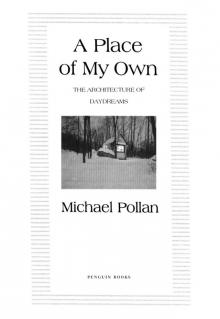 A Place of My Own: The Education of an Amateur Builder
A Place of My Own: The Education of an Amateur Builder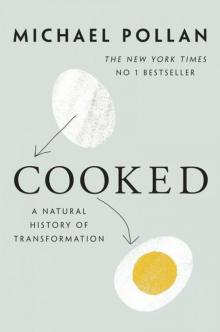 Cooked: A Natural History of Transformation
Cooked: A Natural History of Transformation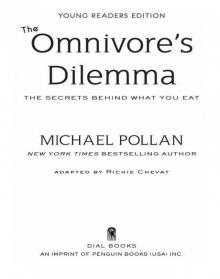 The Omnivore's Dilemma
The Omnivore's Dilemma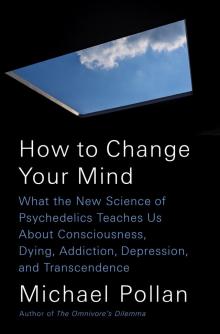 How to Change Your Mind
How to Change Your Mind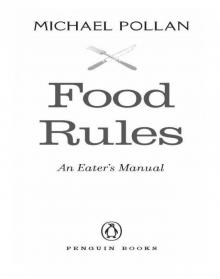 Food Rules
Food Rules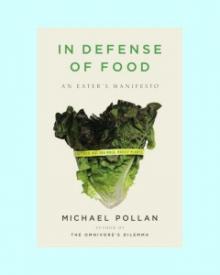 In Defense of Food
In Defense of Food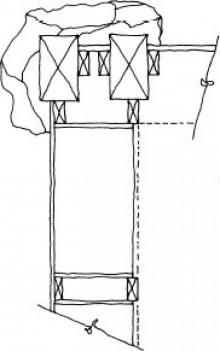 A Place of My Own
A Place of My Own